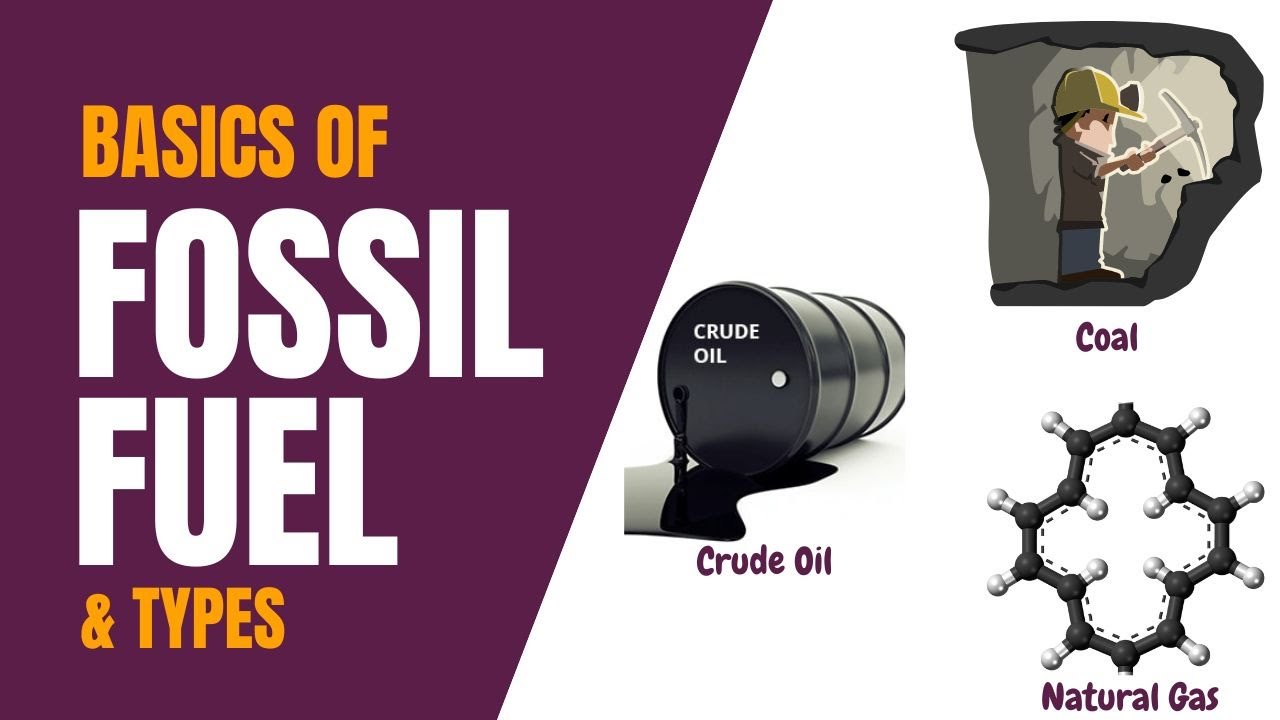What's the Deal With Fossil Fuels? | California Academy of Sciences
Summary
TLDRThis video script explains the formation of fossil fuels from ancient plant and algae remains, detailing how coal, oil, and natural gas are created. It highlights their crucial role in powering our lives and producing everyday items. However, it also underscores the environmental impact of fossil fuels, including land destruction during extraction and the release of CO₂ contributing to global warming and ocean acidification. The script concludes by emphasizing the need for sustainable energy solutions and energy efficiency to combat these issues.
Takeaways
- 🌿 Fossil fuels are formed from the remains of ancient plants and algae.
- 🔥 Coal is created from peat that has been subjected to high heat and pressure over millions of years.
- 💧 Oil and natural gas originate from microscopic algae that were buried and transformed under the sea.
- ⚛️ All fossil fuels contain hydrocarbons, which are compounds of carbon and hydrogen.
- 🚗 The combustion of hydrocarbons releases energy used for electricity, transportation, and heating.
- 🏡 Petroleum is a key ingredient in many everyday items, including plastics, clothes, and electronics.
- 🌍 Burning fossil fuels releases carbon dioxide, a greenhouse gas that contributes to global warming.
- 🌡️ The increased CO₂ levels from fossil fuel burning cause the Earth's temperature to rise beyond natural levels.
- 🌊 About 25% of CO₂ emissions are absorbed by the oceans, leading to ocean acidification and harming marine life.
- ♻️ Fossil fuels are nonrenewable, taking millions of years to form but are being depleted much faster.
- 🌟 There is a growing movement towards sustainable energy and energy efficiency to reduce reliance on fossil fuels.
Q & A
What are fossil fuels?
-Fossil fuels are made of the preserved remains of ancient plants and algae, and they include coal, oil, and natural gas.
How were fossil fuels formed?
-Fossil fuels were formed over millions of years through the transformation of dead plant material and microscopic algae under heat and pressure.
What was the Earth's climate like 300 million years ago?
-300 million years ago, the Earth had a more tropical and humid climate before dinosaurs roamed the planet.
How is coal formed?
-Coal is formed from dead plant material that was deposited in swamps and then turned into peat, which over millions of years, transformed into coal under high heat and pressure.
How are oil and natural gas different from coal in terms of formation?
-Oil and natural gas were formed from the remains of microscopic algae that sank to the bottom of the seas and were buried over time, transforming into liquid petroleum or natural gas under heat and pressure.
What are hydrocarbons and why are they important in fossil fuels?
-Hydrocarbons are compounds consisting of carbon and hydrogen bonded together. They are important in fossil fuels because when burned, they produce a lot of energy.
Why are fossil fuels a major source of energy in the United States?
-Fossil fuels are a major source of energy in the United States because they are used for electricity, transportation, and heating.
How are petroleum products used in everyday household items?
-Petroleum is turned into many household items such as plastic bags, bottles, footballs, clothes, cellphones, laptops, and even soap, shampoo, and toothpaste.
What is the environmental problem associated with fossil fuels?
-The environmental problem with fossil fuels is that their extraction can destroy land, water, and air, and their burning produces carbon dioxide, a greenhouse gas that contributes to global warming.
How does burning fossil fuels affect the atmosphere?
-Burning fossil fuels increases the levels of carbon dioxide in the atmosphere, enhancing the greenhouse effect and causing the Earth to become too warm.
What is the issue with CO₂ emissions and the ocean?
-About one quarter of CO₂ emissions are absorbed by the ocean, leading to ocean acidification which can harm marine life.
Why are fossil fuels considered nonrenewable resources?
-Fossil fuels are nonrenewable because they take millions of years to form, which is much longer than the rate at which we are extracting and using them.
What are some solutions to reduce fossil fuel use?
-Solutions to reduce fossil fuel use include incorporating more sustainable energy sources and changing habits to be more energy efficient.
Outlines

This section is available to paid users only. Please upgrade to access this part.
Upgrade NowMindmap

This section is available to paid users only. Please upgrade to access this part.
Upgrade NowKeywords

This section is available to paid users only. Please upgrade to access this part.
Upgrade NowHighlights

This section is available to paid users only. Please upgrade to access this part.
Upgrade NowTranscripts

This section is available to paid users only. Please upgrade to access this part.
Upgrade NowBrowse More Related Video

Fossil Fuel Basics and Types | Simple Science

Sumber Energi Bisa Habis? 😱 | IPA | SayaBisa

Fossil Fuel Formation | Lesson 6 | Earth Science

What are Fossil Fuels? How are they Formed? | Oil, Coal & Natural Gas

Combustíveis fósseis - Brasil Escola

Minyak Bumi dan Gas disertai Animasi Terbentuknya dan Proses Destilasi Minyak Bumi - Kimia XI
5.0 / 5 (0 votes)